When asked why he had never shown any of his art, Walter Haskell Hinton replied with a wink, “I like to know my painting is sold before I do the work.” What better answer could an illustrator give? Hinton had no gallery exhibition in his lifetime – and he lived 94 years, until 1980. A retrospective was mounted in 1993, and on December 3, 2010, a second show will open at The Downtown Gallery of the University of Tennessee in Knoxville.

Image courtesy of Steve Kennedy
By virtue of my other research on illustrators and a family connection, in 2009 I was asked by the Hinton family and the University to write the catalog for this new show. For Today’s Inspiration, I will share a couple of the 60+ pictures from the forthcoming volume Walter Haskell Hinton: Illustrator of the Popular American West as well as a few that don’t appear in it.
Walter Haskell Hinton’s career spans about 70 years. His work has largely escaped the notice of illustration art collectors because he never did quite enough in any one genre to attract notice. It is likely he would have been successful if he had pursued fine art, but Hinton felt that a gallery career would require him to pump out variations of the same thing over and over. He said:
"Now with commercial art I didn’t know what we had in the next minute. Somebody would come in with something entirely different and, well, you had to produce. You had to know something; you would have to have done a certain amount of study to develop yourself to be versatile to take care of all these different situations that may arise. So I preferred that [to easel painting] – there was much more variety and it was much more interesting."
During my research, several collectors told me Hinton’s name was familiar, but each remembered him for something different. “He did that too?” people often exclaimed.

Although he liked to experiment, Hinton’s interest in the opening of the American West, and its symbolism of national ideals for his generation, led to his working on those themes often. He made pictures to appeal to popular taste, and so it is a swashbuckling, and idealized, and beautiful, and patriotic Old West that we see in his work. He prided himself on accurate historical detail, yet his pictures often romanticized the West even when he was documenting real, tragic events.
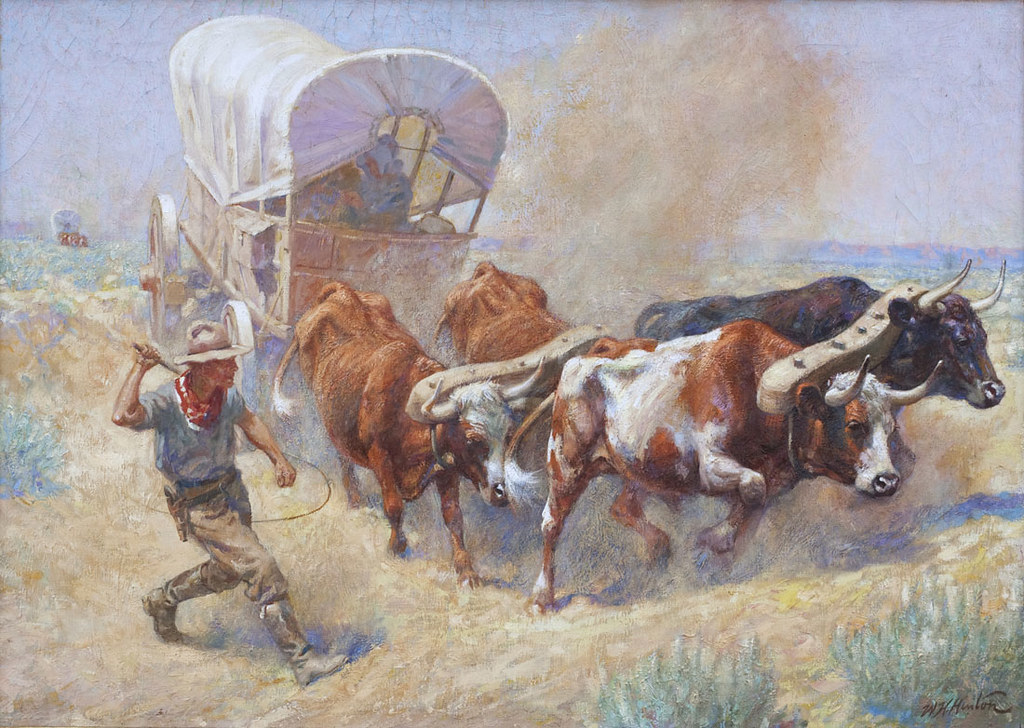
This painting of pioneers, perhaps treading the famed Santa Fe Trail, uses hot splashes of colour in the shadows to convey the intensity of the desert heat. The ribs of the oxen and the tilt of the wagon speak of privation, while the raised whip of the driver creates suspense – will he get his wife and baby to fertile lands in time? While Hinton conveys urgency in these ways, he also bathes the scene in picturesque peach-tinged clouds of dust against a pale blue sky. The overall feeling remains optimistic.

Walter Haskell Hinton came by his preferred subject matter honestly. Descended from a pioneering “49er,” he was born in San Francisco and spent some childhood in Baja and Denver before moving to Chicago in 1893. He attended the Art Institute of Chicago between 1901 and 1905; renowned illustrator Harvey Dunn was there at the same time. As a boy of about 12, Hinton had already studied landscape painting with Albert Fleury, who specialized in street scenes and decorative murals. Hinton originally intended to become a landscape painter as his father had hoped for, but he so excelled in illustration classes at the Institute that he received Honorable Mentions in every one.
The sudden death of his father in 1905 propelled Hinton out into the advertising world at age 18, to support himself and his mother by illustration and design. He began at an engraving house, then moved on to a succession of advertising agencies in Chicago, Milwaukee, New York, and Philadelphia, before finally settling back in Chicago at the Barnes-Crosby agency by 1919. In New York, he managed to get a cover assignment for the humor magazine LIFE.
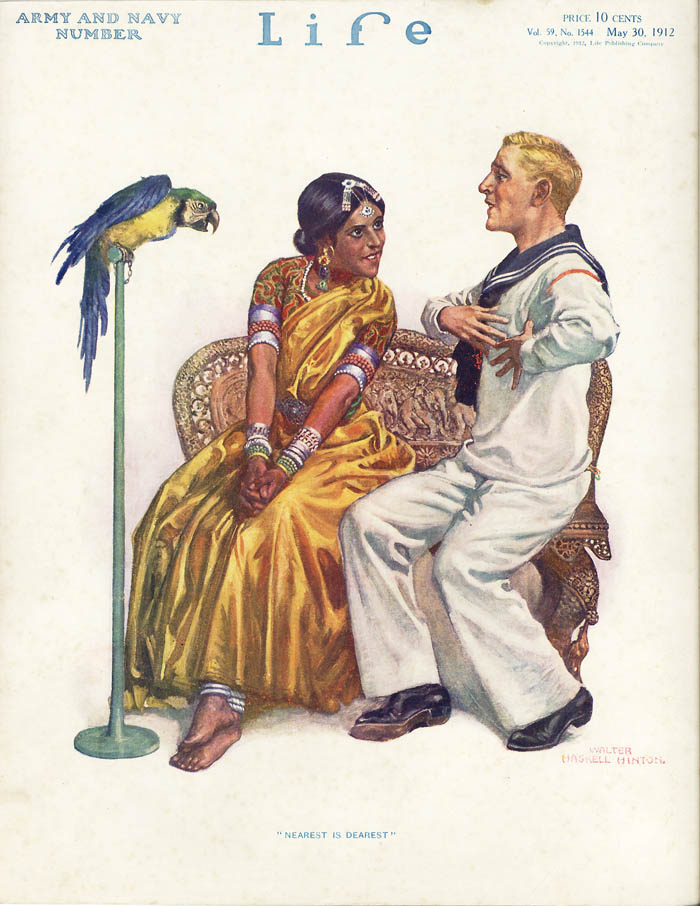
We’ll look at Hinton’s early advertising work in more detail in the next post. Suffice to say, he was a natural at it. Not only did he have great ideas, but he could sell those ideas to the client on the spot. In a 1976 interview, Hinton explained:
"This one fella wanted to represent me. I could beat him all to hell when it came to selling because I could talk to a man, find out what he wanted, and all the time the old think-tank is working and evolv[ing] an idea. Then I could take a piece of paper and draw it in front of him."
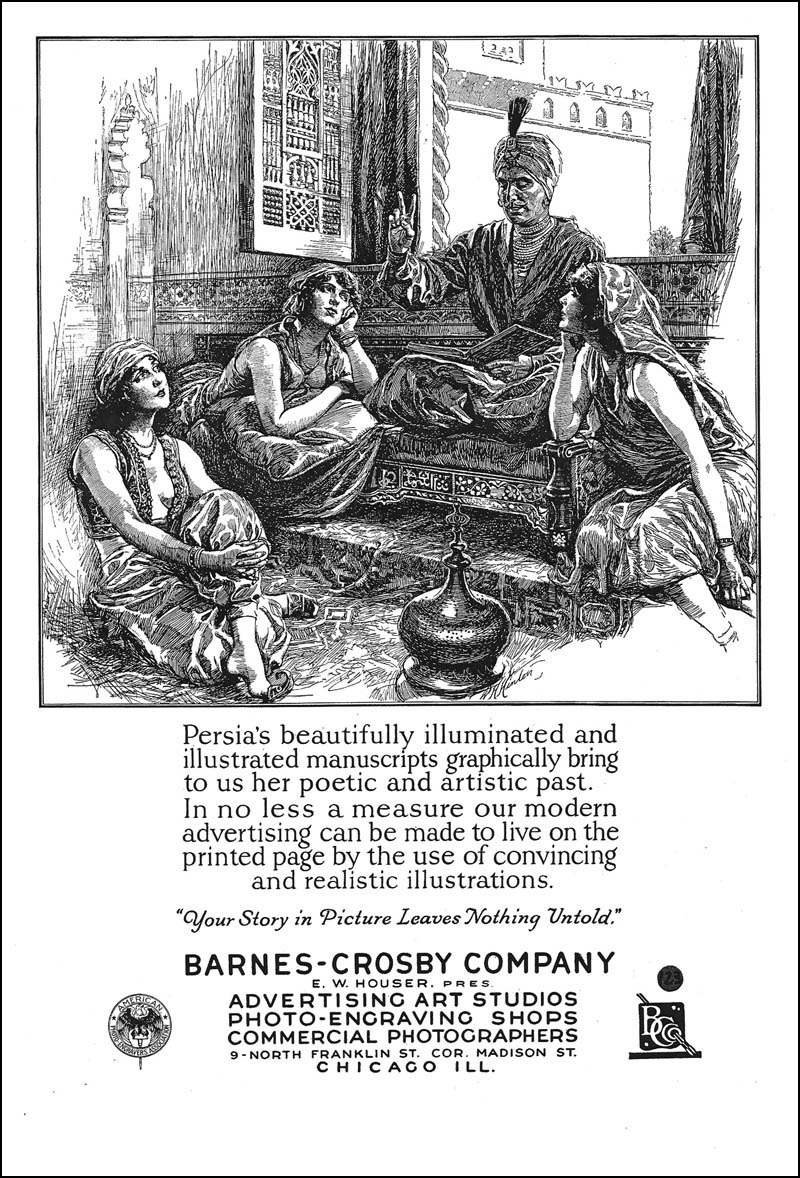
Hinton remained Barnes-Crosby’s senior artist until 1933, when they succumbed to the Depression. Hinton was then thrown back into freelancing – but this allowed him to concentrate on the Western scenes he enjoyed so much. He immediately began producing covers for pulp magazines and sporting magazines, which he continued to do into the mid 1940s. We’ll look at these in more detail in future posts too.
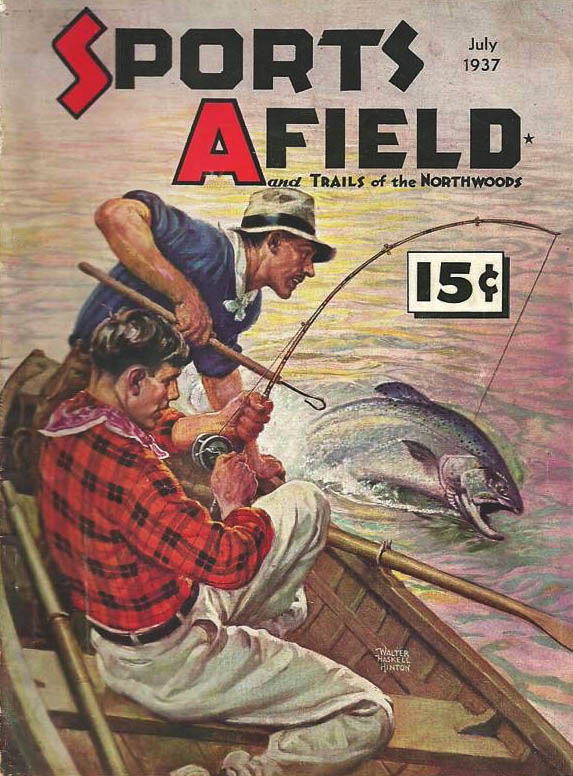
In the late 1930s as the Depression started to lift, Hinton began landing large commissions from corporations for advertising calendar art. John Deere, for its centennial in 1937, asked him to make a series of images for a lavish calendar using special paper and the best rotogravure possible. Hinton later recalled it won an award. Deere & Company has continued to reproduce them on all sorts of objects from belt buckles to porcelain. The work for John Deere led to other contracts, such as for earth-moving equipment manufacturer Austin-Western.
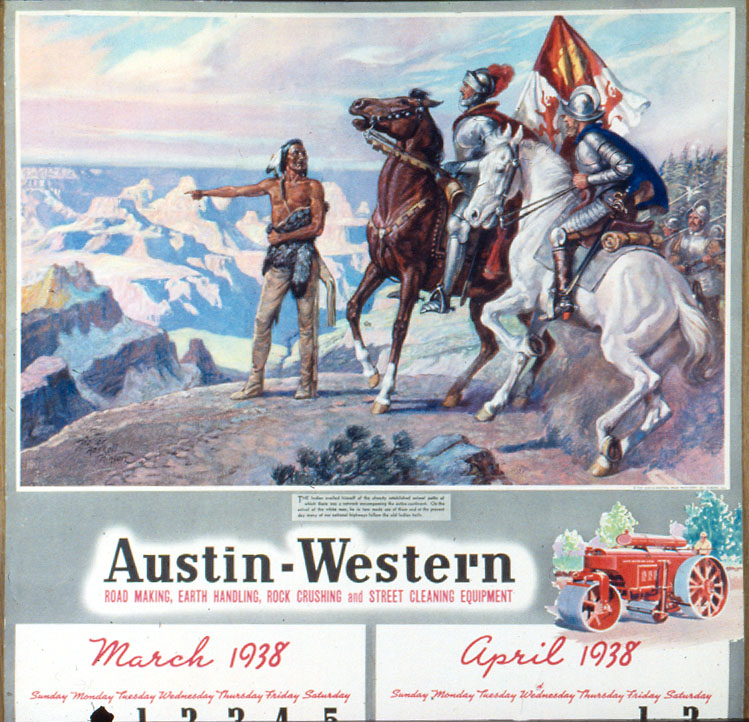
Hinton also produced paintings for calendar companies such as Brown & Bigelow. Often these images would wind up on jigsaw puzzles, a 1930s craze. Hinton was known especially for wildlife scenes both ultra-serious and humorous, farm images probably marketed to children, and idealized scenes of Indians having encounters with bears.
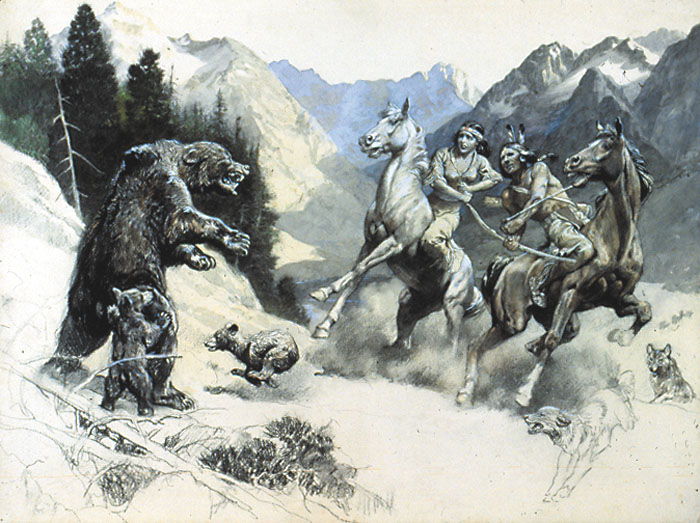
Walter Haskell Hinton was popular with his neighbors in the Chicago suburb of Glen Ellyn, where he lived from 1937 onwards. He mentored several children and entertained all with his vast historical knowledge and house full of curios and antiques. When he passed on in 1980, he left his family very few original finished paintings. Most had remained with clients or been given away. The exhibition opening December 3, 2010 has located some original paintings never before publicly exhibited.
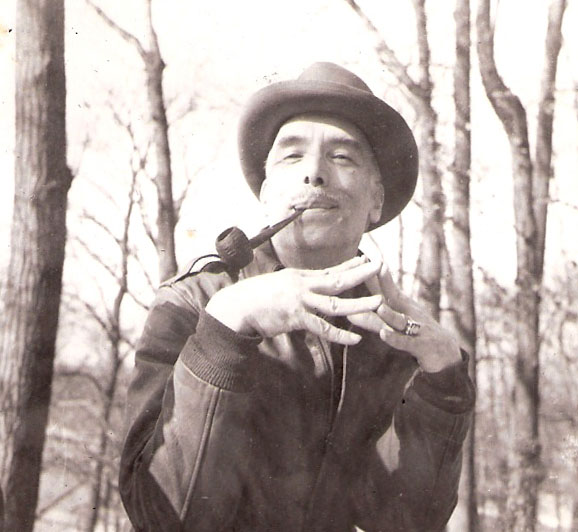
Fortunately, Hinton did leave behind a large collection of tearsheets and comprehensive sketches – we will look at more of these this week.
* Jaleen Grove's critical biography of Walter Haskell Hinton, published by the Ewing Gallery at the University of Tennessee, began as a fairly brief exhibition catalog essay. It grew into a 96-page book when a wealth of interviews and primary documents were obtained. The book differs from this series on Today’s Inspiration in that it explores key issues in the cultural production of commercial art, both the troubling aspects of mass-culture images and the material pleasures of them.
Because it is a non-profit educational endeavour for which she volunteered her time, Jaleen would like to invite you to advance-order a copy or donate to the project, to help with production and distribution costs.
* Walter Haskell Hinton official website
No comments:
Post a Comment